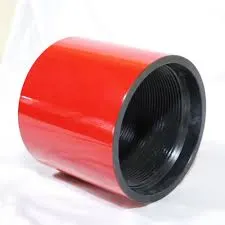- Afrikaans
- Albanian
- Amharic
- Arabic
- Armenian
- Azerbaijani
- Basque
- Belarusian
- Bengali
- Bosnian
- Bulgarian
- Catalan
- Cebuano
- Corsican
- Croatian
- Czech
- Danish
- Dutch
- English
- Esperanto
- Estonian
- Finnish
- French
- Frisian
- Galician
- Georgian
- German
- Greek
- Gujarati
- Haitian Creole
- hausa
- hawaiian
- Hebrew
- Hindi
- Miao
- Hungarian
- Icelandic
- igbo
- Indonesian
- irish
- Italian
- Japanese
- Javanese
- Kannada
- kazakh
- Khmer
- Rwandese
- Korean
- Kurdish
- Kyrgyz
- Lao
- Latin
- Latvian
- Lithuanian
- Luxembourgish
- Macedonian
- Malgashi
- Malay
- Malayalam
- Maltese
- Maori
- Marathi
- Mongolian
- Myanmar
- Nepali
- Norwegian
- Norwegian
- Occitan
- Pashto
- Persian
- Polish
- Portuguese
- Punjabi
- Romanian
- Russian
- Samoan
- Scottish Gaelic
- Serbian
- Sesotho
- Shona
- Sindhi
- Sinhala
- Slovak
- Slovenian
- Somali
- Spanish
- Sundanese
- Swahili
- Swedish
- Tagalog
- Tajik
- Tamil
- Tatar
- Telugu
- Thai
- Turkish
- Turkmen
- Ukrainian
- Urdu
- Uighur
- Uzbek
- Vietnamese
- Welsh
- Bantu
- Yiddish
- Yoruba
- Zulu
pipe coupling stainless steel
Stainless Steel Pipe Couplings A Comprehensive Guide
In the world of plumbing, construction, and industrial applications, the importance of reliable and durable materials cannot be overstated. One of the essential components in piping systems is the pipe coupling. Among the various materials used for this purpose, stainless steel has emerged as a preferred choice due to its superior properties. This article delves into the characteristics, benefits, applications, and installation methods of stainless steel pipe couplings.
What is a Pipe Coupling?
A pipe coupling is a fitting designed to connect two sections of pipe, allowing for the continuation of fluid or gas flow. Couplings can also be used to repair broken pipes, extend the length of piping systems, or transition between different types of pipes. Depending on the application, there are various types of couplings, including threaded, flanged, and welded. Stainless steel couplings are particularly popular for their strength and resistance to corrosion.
Advantages of Stainless Steel Couplings
1. Corrosion Resistance One of the most significant advantages of stainless steel is its remarkable resistance to corrosion. This attribute makes stainless steel pipe couplings ideal for use in environments where they are exposed to moisture, harsh chemicals, or other corrosive substances, ensuring a long service life.
2. Strength and Durability Stainless steel is known for its high tensile strength, which enables it to withstand high-pressure applications. Couplings made from stainless steel can handle extreme temperatures and heavy loads, which is paramount in industrial settings.
3. Hygienic Properties Stainless steel is non-porous and easy to clean, making it a preferred material in sanitary applications. Industries such as food and beverage, pharmaceuticals, and healthcare benefit from the hygienic properties of stainless steel pipe couplings.
4. Aesthetic Appeal The shiny, sleek appearance of stainless steel can also be a deciding factor. In applications where the piping is visible, a stainless steel finish provides an attractive look.
5. Ease of Installation Stainless steel couplings can be installed with relative ease. Many types are designed for quick assembly, allowing for efficient project timelines and reduced labor costs.
Applications of Stainless Steel Pipe Couplings
pipe coupling stainless steel

Stainless steel couplings are versatile and find applications across various industries
- Oil and Gas In these sectors, stainless steel couplings are vital for transporting fluids and gases, handling high pressures and corrosive materials. - Water Treatment Plants Their corrosion resistance and durability make stainless steel couplings ideal for water and wastewater treatment systems, where they are used to connect pipes in challenging environments. - Food and Beverage Industry Due to their hygienic properties, stainless steel couplings are extensively used in food processing and brewing facilities. - Pharmaceuticals In the pharmaceutical industry, where hygiene is critical, stainless steel couplings help in building sterilized piping systems. - Construction They are also used in a variety of construction applications, connecting plumbing systems in commercial and residential buildings.
Installation Tips
Installing stainless steel pipe couplings requires attention to detail to ensure a leak-free connection
1. Choose the Right Type Depending on the application's requirements, select the appropriate type of coupling (threaded, flanged, or welded).
2. Prepare the Pipes Ensure that the pipes to be joined are clean and free from debris. This step is crucial for achieving a secure connection.
3. Follow Manufacturer Instructions Always refer to the manufacturer's guidelines for installation procedures to avoid common pitfalls and ensure compliance with industry standards.
4. Use Appropriate Tools Employ the right tools for installation to facilitate a proper connection. For threaded couplings, pipe wrenches are typically necessary. For welds, appropriate welding equipment should be used.
5. Check for Leaks After installation, test the system for leaks by applying pressure and inspecting all joints thoroughly.
Conclusion
Stainless steel pipe couplings offer a robust solution for various piping needs in diverse industries. Their exceptional corrosion resistance, durability, and hygienic properties make them a favored choice among engineers and architects. By understanding the advantages and applications of stainless steel couplings, professionals can make informed decisions that enhance the efficiency and longevity of their piping systems. Thus, investing in high-quality stainless steel couplings is an essential step towards ensuring the reliability and safety of fluid transport systems.
-
Tubing Pup Joints: Essential Components for Oil and Gas OperationsNewsJul.10,2025
-
Pup Joints: Essential Components for Reliable Drilling OperationsNewsJul.10,2025
-
Pipe Couplings: Connecting Your World EfficientlyNewsJul.10,2025
-
Mastering Oilfield Operations with Quality Tubing and CasingNewsJul.10,2025
-
High-Quality Casing Couplings for Every NeedNewsJul.10,2025
-
Boost Your Drilling Efficiency with Premium Crossover Tools & Seating NipplesNewsJul.10,2025







